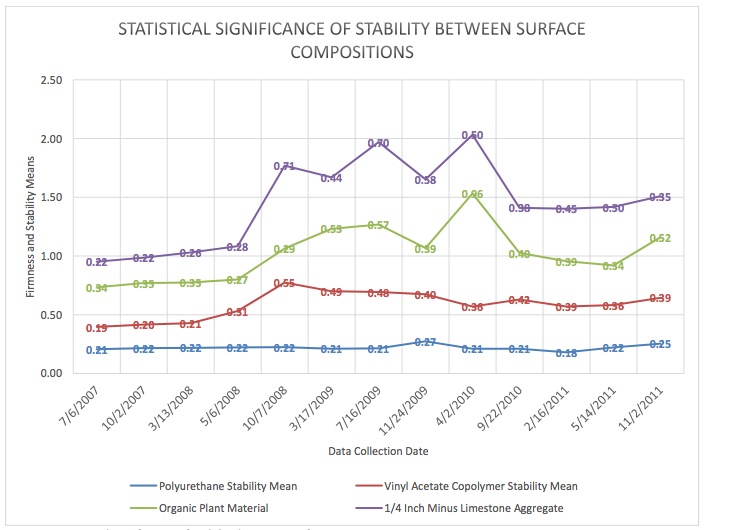
1970s Bicycles Are Beautiful – Film With Bill Cosby.
View this complete post...







John Hennessy III,
P.E.






URBAN LAND INSTITUTE
HOW DO REAL ESTATE DEVELOPERS AND INVESTORS—who could pursue opportunities regionally, nationally, or internationally—think about infrastructure? How do city leaders use infrastructure investments to position their cities for real estate investment and economic development? What role does infrastructure play relative to other economic development strategies? And are public and private perceptions and priorities aligned—or do they diverge, and in what ways? These were the central questions for Infrastructure 2014: Shaping the Competitive City, the eighth in an annual series of reports examining infrastructure trends and issues by ULI and EY.

NATIONAL CENTER ON ACCESSIBILITY
The impetus for the National Trails Surface study was to investigate alternatives to the typical firm and stable surface materials of asphalt, concrete, or boardwalk. It is a common misconception that in order to make a trail surface firm and stable, it needs to be paved. Professionals have found that using soil stabilizers, or natural aggregates, can be effective alternatives to creating a trail surface that meets accessibility guidelines (Boone, 2008).

CITY OF ATLANTA INNOVATION DELIVERY TEAM
All across our city, we are making remarkable progress to ensure that Atlanta continues to be the capital of the Southeast. From forging public-private partnerships and developing initiatives that support our youth, to launching the world’s first 311 system on the cloud, the work we are doing in Atlanta is not only moving our city forward, but is setting a standard for cities nationwide.
-Mayor Kasim Reed

URBAN LAND INSTITUTE
Riverfront Park is the result of a 25-year collaborationto create a viable and vibrant urbanresidential community in downtown Denver. Builtunder a form-based zoning code, the developmentencompasses 1,859 privately developed,for-sale, for-rent, and affordable homes, withbuildings first opening in 2001 and with constructionstill underway in 2014. The neighborhood fits within the city’s grid and is connectedto surrounding areas by four pedestrian bridgesthat cross railroad tracks, an interstate highway,and a river, each funded through a combinationof public and private investment. Built on abrownfield and former rail yard, the project wasan early model of sustainability. Today, residentscan play, wander, skate, swim, and walk their dogs along dedicated nonvehicular pathways orin four different parks built by the state, the city,the developer, donors, and residents.

After years of fighting against the often-flooded Cedar River, Charles City used land acquired through Federal Emergency Management Agency flood buyouts to create an inviting riverfront park with a whitewater course. Capitalizing on the river’s natural features to help prevent future flooding, Charles City turned the river from an obstacle into an ecological and social benefit. Members of the community were involved in the park’s design and construction. Riverfront Park is a model of how to strategically use flooded properties to create a sustainable and economically valuable amenity.
View this complete post...
OPENLANDS PROJECT
CENTER FOR NEIGHBORHOOD TECHNOLOGY
Green infrastructure is the interconnected network of land and water that supports native species, maintains natural and ecological processes, sustains air and water resources, and contributes to the health and quality of life of people and communities…The need to protect the region’s green infrastructure is greater than ever. Rapid changes in land use, increases in non-native species, and other threats imperil the region’s natural heritage. Green infrastructure should serve as the strategic framework for conservation and development so that linkages and key natural areas can be preserved before development occurs.

AMERICAN SOCIETY OF CIVIL ENGINEERS: GEORGIA SECTION
With new grades for the first time since 2009, Georgia’s infrastructure has shown very little improvement and once again received a cumulative grade of C. The Georgia Section of ASCE assessed the same 12 categories as 2009: aviation, bridges, dams, drinking water, energy, parks and recreation, ports, rail, roads, school facilities, solid waste, stormwater, transit and wastewater. Recognizing the importance of transportation to Georgians, we added two new categories in 2014: ports and rail. As indicated by the grade, much work remains to be done, though there are some bright spots.

What: NYC’s Highline Park, constructed on an unused elevated freight rail in the west side of Manhattan
Where: Manhattan’s West Side, between Gansevoort and West 34th Streets
When: The High Line first saw traffic in 1934, and the last train crossed its tracks in 1980. Construction on the park began in 2006, and the first section opened in 2009. Construction on additional sections is projected to continue through 2014.

Urban Land Institute
2013 Urban Open Space Finalists
-Urban Land Institute on YouTube
Follow InfrastructureUSA
Video, stills and tales. Share images of the Infra in your community that demands attention. Post your ideas about national Infra issues. Go ahead. Show Us Your Infra! Upload and instantly share your message.
Is the administration moving fast enough on Infra issues? Are Americans prepared to pay more taxes for repairs? Should job creation be the guiding determination? Vote now!
What do the experts think? This is where the nation's public policy organizations, trade associations and think tanks weigh in with analysis on Infra issues. Tell them what you think. Ask questions. Share a different view.
The Infra Blog offers cutting edge perspective on a broad spectrum of Infra topics. Frequent updates and provocative posts highlight hot button topics -- essential ingredients of a national Infra dialogue.
It is encouraging to finally see clear signs of federal action to support a comprehensive US infrastructure investment plan.
Now more than ever, our advocacy is needed to keep stakeholders informed and connected, and to hold politicians to their promises to finally fix our nation’s ailing infrastructure.
We have already engaged nearly 280,000 users, and hoping to add many more as interest continues to grow.
We require your support in order to rise to this occasion, to make the most of this opportunity. Please consider making a tax-deductible donation to InfrastructureUSA.org.
Steve Anderson
Managing Director
SteveAnderson@InfrastructureUSA.org
917-940-7125